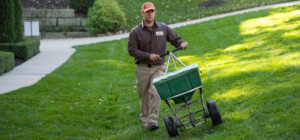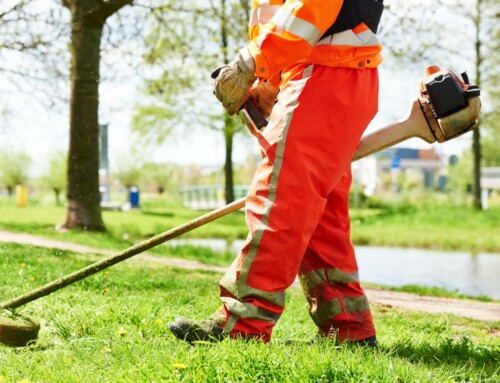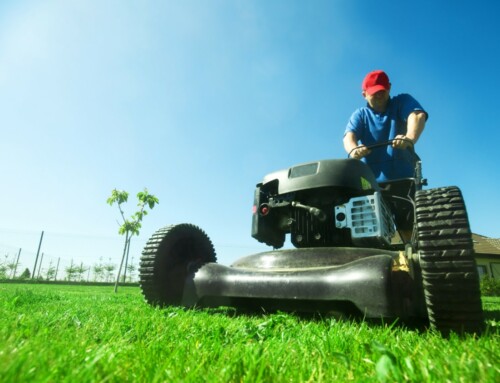With the advent of cooler temperatures and shortened daylight hours of Autumn comes the annual leaf drop, that while certainly having many charms, does tend to make more work for the average homeowner. Although it’s very tempting to just let them be, and hope nature will make them all magically disappear before spring arrives, that would be a huge mistake for two reasons. One is that raking/sweeping the leaves removes the smothering layers that could result in dead patches of lawn by springtime. The second reason is, if you, or someone you know is a gardener, all those leaves will make a great addition to a compost or mulch pile.
Of all the fall season lawn care tips, proper use of a lawnmower is probably the most effective way for the homeowner to prepare a lawn for the upcoming winter. Since grass becomes dormant in the winter, there is no need to encourage extra growth as in summer, so it is advised to lower the mower cutting blade to less than 3 inches. This will reduce the amount of vegetative duff that can be a haven for lawn damaging field mice. Ideally, the last mowing of the fall season should be timed just right to catch the grass on the cusp of dormancy, and also be able to shred the last leaves that somehow missed the rake.
Autumn is an excellent time to do serious weeding, once the lawn has been raked and its true composition is exposed. Many common weeds like crabgrass and plantain go to seed at this time, and if allowed to, will result in a plethora of new weeds next year. Please don’t be tempted to kill all the weeds with chemicals. Pulling them by hand or with tools, mowing with a bagger attachment to catch the seeds, and using a 10% vinegar spray are all classic, eco-friendly ways to mitigate weeds. While in the course of dealing with weeds, traditional fall season lawn care tips suggest it’s also a good idea to make note of all the bare patches in the lawn. These patches can serve as the perfect venue to do any soil testing before winter. Most grass grows best in neutral soil with a PH of 6 to 7. Adding calcium to acidic and sulfur to alkaline soils will put your lawn back in balance. Once this is done, the lawn is primed to plant grass seed to fill in the bare spots. The developing roots will not dry out as quickly as in spring, providing the new shoots are watered diligently, particularly if your area experiences the seasonal droughts that typically plague lawn care in the Kansas City area. In keeping with a more organic approach, and acknowledging the upcoming dormancy, fertilizing the new and existing grass is recommended.
If you feel your lawn maintenance routine has gotten out of hand, and you no longer have the time or inclination to devote to it, hiring a professional service will definitely free you of these constraints. Providing all your lawn mowing, weeding, and feeding needs on a timely schedule, and not waste any expensive materials in the process. Dealing with your lawn throughout the growing season and beyond, they will be right on top of any concerns that might arise. With all the options available, lawn care in the Kansas City area can be a breeze!







